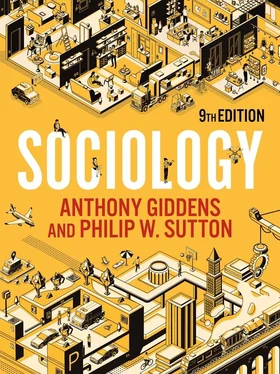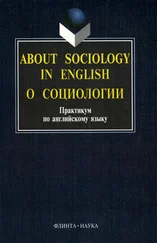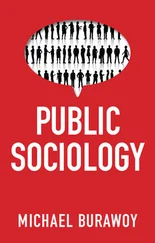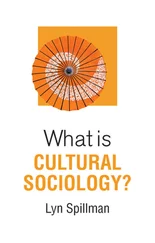Rather than simply calling for economic growth to be reined in, more recent developments turn on the concept of sustainable development. This was first introduced in a report commissioned by the United Nations, Our Common Future (WCED 1987). This is also known as the Brundtland Report, after the chair of the organizing committee, Gro Harlem Brundtland, then prime minister of Norway. The report’s authors argued that use of the Earth’s resources by the present generation was unsustainable.
The Brundtland Commission regarded sustainable development as ‘development which meets the needs of the present generation, without compromising the ability of future generations to meet their own needs’ (WCED 1987) – a pithy definition, but one which carries enormous significance. Sustainable development means that economic growth should be carried on in such a way as to recycle physical resources rather than deplete them and to keep levels of pollution to a minimum. However, the definition is open to criticism. How many generations should be considered – five, ten, or more? How can we know what are the ‘needs’ of the present generation? How can we compare human needs in developing countries with those in the relatively rich countries? These questions are still debated, though the concept of sustainable development – however problematic – continues to motivate many individuals and voluntary groups.
Classic studies 5.2 Modelling the limits to economic growth
The research problem
Global human population has grown enormously since industrialization took hold, and the resulting pressure on the environment has led to soil degradation, deforestation and pollution. Are there any limits to this pattern of development? Will food supplies keep up with increasing demand or will the world see mass famine? How many people can the planet support without ruining the environment? These hugely significant questions were asked of a group of scientists by a global think tank, the Club of Rome, almost forty years ago. The resulting book was published as The Limits to Growth (Meadows et al. 1972).
Meadows and colleagues’ explanation
The Limits study used modern computermodelling techniques to make forecasts about the consequences of continued economic growth, population growth, pollution and the depletion of natural resources. Their computer model – World3 – showed what would happen if the trends that were established between 1900 and 1970 were to continue to the year 2100. The computer projections were then altered to generate a variety of possible consequences, depending on different rates of growth of the factors considered. The researchers found that, each time they altered one variable, there would eventually be an environmental crisis. If the world’s societies failed to change, then growth would end anyway sometime before 2100, through the depletion of resources, food shortages or industrial collapse.
The research team used computer modelling to explore five global trends (Meadows et al. 1972: 21):
accelerating industrialization across the world
rapid population growth
widespread malnutrition in some regions
depletion of non-renewable resources
a deteriorating natural environment.
The programme was then run to test twelve alternative scenarios, each one manipulated to resolve some of the identified problems. This allowed the researchers to ask questions about which combinations of population levels, industrial output and natural resources would be sustainable. The conclusion they drew in 1972 was that there was still time to put off the emerging environmental crisis. But, if nothing was done – and even if the amount of available resources in the model were doubled, pollution were reduced to pre-1970s levels and new technologies were introduced – economic growth would still grind to a halt before 2100. Some campaigners saw this as vindicating the radical environmental argument that industrial societies were just not sustainable over the long term.
Many economists, politicians and industrialists roundly condemned the report, arguing that it was unbalanced, irresponsible and, when its predictions failed to materialize, just plain wrong. The modelling was largely devoid of political and social variables and was therefore just a partial account of reality. The researchers later accepted that some of the criticisms were justified. The method used focused on physical limits and assumed existing rates of economic growth and technological innovation, but this did not take account of the capacity of human beings to respond to environmental challenges. For example, market forces could be made to work to limit the over-exploitation of resources. If a mineral such as magnesium starts to become scarce, its price will rise. As its price rises it will be used less, and producers might even find alternatives should costs rise too steeply. Limits was seen by many as yet another overly pessimistic, catastrophist tract that engaged in unreliable ‘futurology’ – predicting the future from current trends.
Contemporary significance
Whatever its limitations, the original report made a significant impact on public debate and environmental activism. It made many more people aware of the damaging consequences of industrial development and technology, as well as warning about the perils of allowing pollution to increase. The report was an important catalyst for the modern environmental movement (for a wider discussion, see chapter 20, ‘Politics, Government and Social Movements’). Twenty years later, the team published Beyond the Limits (1992), an even more pessimistic report, castigating the world’s politicians for wasting the time, arguing that ecological ‘overshoot’ was already occurring. Then, in 2004, their 30-Year Update was released, arguing that, although some progress had been made in environmental awareness and technological development, the evidence of global warming, declining fish stocks, and much more, showed a world ‘overshooting’ its natural limits. This conclusion was also that of the UN Millennium Ecosystem Assessment Board of 2005, which is tellingly titled Living Beyond our Means . The basic conclusion from the original Limits report and its updates continues to resonate.
Following the publication of Our Common Future , ‘sustainable development’ came to be widely used by both environmentalists and governments. It was employed at the UN Earth Summit in Rio de Janeiro in 1992 and has subsequently appeared in other meetings organized by the UN, such as the World Summit on Sustainable Development in Johannesburg in 2002. Sustainable development is the overarching UN framework covering a series of seventeen Sustainable Development Goals (SDGs) goals for the period 2015 to 2030, including the elimination of poverty and hunger, gender equality, clean water and good sanitation for all, responsible consumption and production, protecting life on land, and taking action on climate change (UN 2019b).

For more on the global development, see chapter 6, `Global Inequality’.
Critics see the concept of sustainable development as too vague, neglecting the specific needs of poorer countries. It has been argued that the concept tends to focus attention only on the needs of richer countries; it does not consider how high levels of consumption in the more affluent countries are satisfied at the expense of people in developing countries. For instance, demands on Indonesia to conserve its rainforests could be seen as unfair, because Indonesia has a greater need than the industrialized countries for the revenue it must forgo.
Читать дальше













